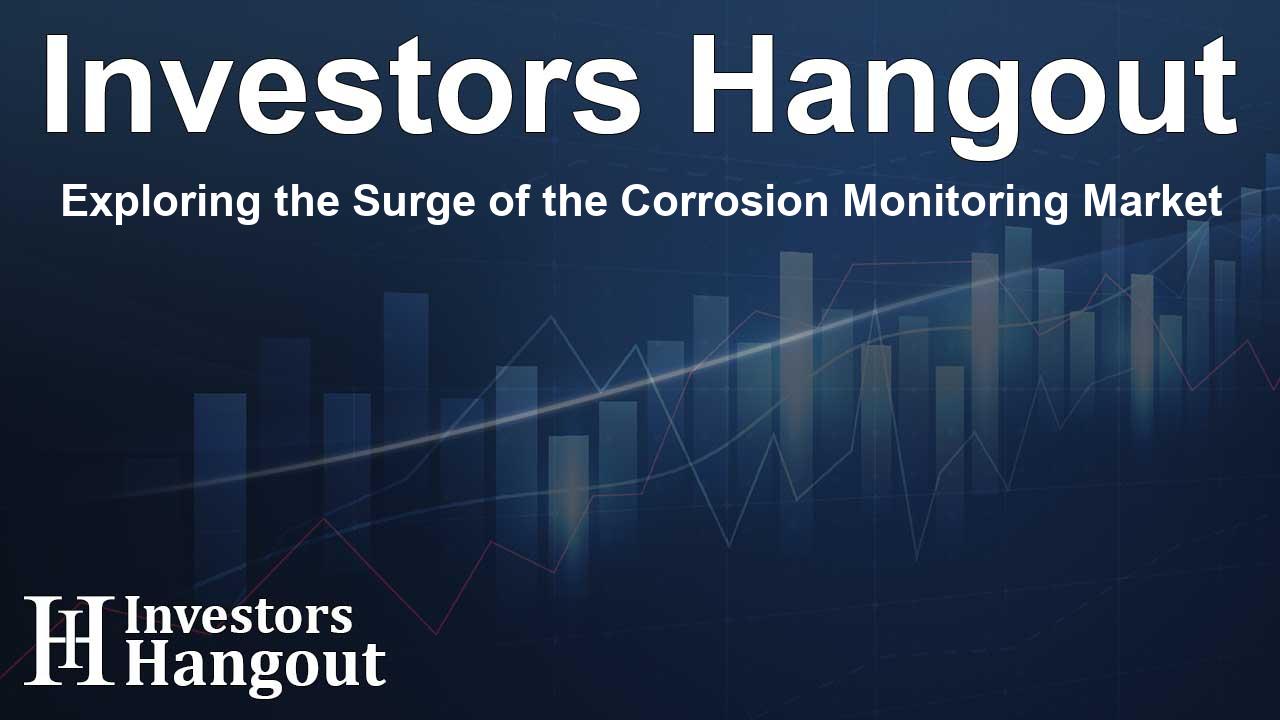Exploring the Surge of the Corrosion Monitoring Market

Understanding the Corrosion Monitoring Market
The corrosion monitoring market is currently experiencing remarkable growth, driven primarily by a surge in demand for predictive maintenance and managing asset integrity within a wide array of industrial sectors. The market, valued at approximately USD 351.17 million recently, is anticipated to reach USD 916.02 million by 2032. This signifies a commendable compound annual growth rate (CAGR) of about 11.24% during the forecast period.
Key Factors Driving Market Growth
Several compelling factors are contributing to the rapid development of the corrosion monitoring market. The oil and gas, chemical manufacturing, and power generation industries have recognized the critical importance of robust corrosion management solutions. The objective is to mitigate potential equipment failures, thereby ensuring operational safety and continuity.
In regions like the United States, the growth trajectory seems particularly promising as investments in infrastructure continue to grow. From an estimated USD 101.42 million in 2023, projections indicate an increase to USD 255.43 million by 2032. Such growth is fueled by the escalating need for asset protection, particularly in the oil and gas sector, combined with advancements in monitoring technologies.
Major Players in the Corrosion Monitoring Space
The landscape of this market is competitive, with several key players making significant contributions:
- Cosasco - Known for offering corrosion probes and sensors.
- Clamp on As - Specializes in non-intrusive ultrasonic corrosion monitoring.
- Emerson Electric Co. - Provides corrosion monitoring systems with advanced technologies.
- Honeywell International Inc. - Develops smart and wireless corrosion sensors.
- MISTRAS Group, Inc. - Focuses on acoustic emission corrosion monitoring solutions.
Market Segmentation and Insights
From a segmentation perspective, the non-intrusive segment is leading the market with a substantial share of over 64%. Its effectiveness stems from the ability to gather real-time data on corrosion without interrupting operations. Technologies relying on external sensors facilitate enhanced monitoring while minimizing downtime and improving overall safety.
Corrosion coupons also play a pivotal role, holding a market share exceeding 38%. This traditional but effective method leverages small metal strips to measure corrosion rates, proving to be a reliable approach in various sectors, particularly oil and gas.
Regional Analysis and Future Outlook
North America stands as the dominant region in the corrosion monitoring market, capturing over 38% of the market share as of now. The region benefits from innovative technologies in use, such as online sensors and predictive analytics that bolster safety and compliance in existing sectors.
Moreover, rapid developments in countries within the Asia-Pacific region foretell a bright future for the market, attributed to factors like industrialization and substantial investments in energy. The growing emphasis on safety standards and effective monitoring systems supports this growth narrative, promising significant opportunities ahead.
Conclusion on Corrosion Monitoring Trends
In conclusion, as industries worldwide seek to minimize maintenance costs and improve operational efficiency, the demand for corrosion monitoring solutions is set to rise. Thus, keeping abreast of the latest innovations and market developments will be essential for businesses that wish to leverage these advancements to their advantage.
Frequently Asked Questions
What are the main drivers of growth in the corrosion monitoring market?
The main drivers include the increasing need for predictive maintenance and asset protection across critical industrial sectors, particularly oil and gas.
How significant is the expected growth of the corrosion monitoring market?
The market is expected to grow from USD 351.17 million in 2023 to USD 916.02 million by 2032, indicating a CAGR of 11.24%.
What regions are leading in corrosion monitoring technologies?
North America currently leads the market, but the Asia-Pacific region is emerging as the fastest-growing area due to rapid industrialization.
Which technologies are commonly used in corrosion monitoring?
Common technologies include non-intrusive monitoring systems, corrosion coupons, and smart wireless sensors.
What industries are most affected by corrosion?
Industries such as oil and gas, chemical manufacturing, and power generation are particularly susceptible to corrosion, necessitating advanced monitoring solutions.
About The Author
Contact Olivia Taylor privately here. Or send an email with ATTN: Olivia Taylor as the subject to contact@investorshangout.com.
About Investors Hangout
Investors Hangout is a leading online stock forum for financial discussion and learning, offering a wide range of free tools and resources. It draws in traders of all levels, who exchange market knowledge, investigate trading tactics, and keep an eye on industry developments in real time. Featuring financial articles, stock message boards, quotes, charts, company profiles, and live news updates. Through cooperative learning and a wealth of informational resources, it helps users from novices creating their first portfolios to experts honing their techniques. Join Investors Hangout today: https://investorshangout.com/
The content of this article is based on factual, publicly available information and does not represent legal, financial, or investment advice. Investors Hangout does not offer financial advice, and the author is not a licensed financial advisor. Consult a qualified advisor before making any financial or investment decisions based on this article. This article should not be considered advice to purchase, sell, or hold any securities or other investments. If any of the material provided here is inaccurate, please contact us for corrections.
